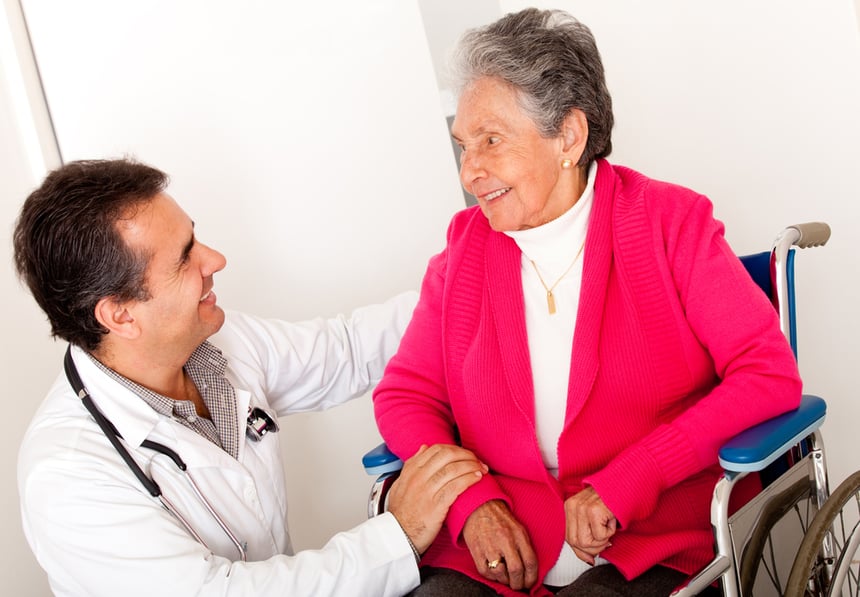Say No To Standing In Queue! Reduce Wait Times At Line Queue

6 Feb 2023
Let’s face it. Waiting in line is the worst. Even during a global pandemic, lines are everywhere you go. People are still lining up in front of the DMV, the grocery store, patiently waiting. It’s a waste of time that takes up space and benefits no one. Everything about lines breeds inefficiency, and yet we’re still standing there, waiting our turn.
Is this really a good use of your customers’ time?

People are more likely to remember negative experiences than positive ones. No matter if it’s your fault or not, people will remember how bad they felt waiting in line for your services instead of how good it felt doing business with you.
If you’re interested in delivering a better customer service experience, you need to reduce waiting times. Let’s talk about queues, and how you can prevent your clients from waiting “in que” for far too long.
What is a Queue?
According to the dictionary definition, a queue is a line (usually made up of people) who are waiting for their turn to be attended to. You can arrange people or items in a queue.
The reason for referencing the dictionary here is because there’s a lot of confusion over the word “queue”. In pronunciation it’s perplexing enough to get mixed up with several other similar words, not to mention the eternal confusion: how do you spell queue? So what are some of the other “queue” lookalikes? “Que” or “queue?”
Queue up here and find out.
- Que vs Queue — What is a que? “Que” is noted in the Merriam Webster Dictionary as being homophonous with “queue”, but not to be confused. It refers either to the Spanish word for “what” or a shortened version of Quebec. So if you’re still getting confused about whether to use “in queue” or “in que”, if you’re speaking English chances are that it’s probably “queue”. “Que” is not the action word for “queue”: you can’t “que in line”, nor can you stand in a “line que”. “Queue” vs “que” should be a no-brainer: if it’s referring to a line, it’s a queue.
- Cue vs Queue — “Cue” refers to a prompt or signal to begin another action. So the answer to the debate as to whether “cue up” or “queue up” is correct: depends on the circumstance. You’ll be in a queue to get your groceries, but you’ll have to cue up a funny video to show your friend. The queue vs cue definition can be challenging to figure out, but once you’ve gotten the hang of it you’ll be queueing up for more.
- Cue vs Que — Despite sounding similar, these words don’t have anything in common. They are homophones that mean completely different things.
Hopefully the explanations above helped you resolve some uncertainty about what means what. If you’re going to spend so much of your life standing in queues, you might as well learn more about the dictionary definitions of confusing lookalikes.
Next up, let’s talk more about the concept of the queue itself.
Right on Queue: A Brief History of Queues

Believe it or not, there’s an actual history to being “in que”. (No, not being in Quebec.) There’s a mathematical field dedicated to studying the act of waiting in line.
Queueing theory was invented in 1909 by Danish engineer A.K. Erlang, who published the first and perhaps most important paper about lining up. Working at the Copenhagen Telephone Exchange, he was interested in finding a more efficient way of operating the telephone lines.
In an attempt to calculate how many operators and lines are necessary for smooth service, he came up with brand new formulas to measure this process.
Without getting too technical, queueing theory is mostly about services. There are two parties involved in exchanging services:
- The requesting party. Also known as a request or customer.
- The delivering party. Also known as a server.
Everything about queueing theory revolves around these two parties and the system supporting this seemingly simple transaction. Researchers might ask questions like:
- How many customers are arriving?
- How quickly are customers arriving?
- What’s the capacity of the waiting zone?
- How many servers are there?
- How quickly can servers complete each request?
- Are people staying in line?
Of course, this was never just about mathematics. A.K. Erland invented this theory to uncover how the telephone exchange could get better at what it does, and this function of queueing theory continues today.
Knowing the answers to these questions can help a business determine how to streamline operations. Queueing theory is crucial in finding the best way to run your services.
In Que: What Lining Up Means In Business
Queues cannot exist without demand. Where there is a demand, you can cue a line.
In fact, queues need to exist to handle overcapacity. No matter how booming your business is, there are simply never enough resources to serve everybody at once.
When you transfer queueing theory to a modern business context, there are even more questions to ask.
- Can you speed up transportation?
- How do you optimize customer service?
- What’s the shortest route for shipping an order?
- How does telecommunications figure into everything?
- Do you need to hire more people?
- Most importantly, how much will it all cost?
There are so many factors to consider about speeding up the way you do business. Between balancing costs and streamlining communications, there’s a lot to think about when you’re in charge of operations. Are you willing to hire more people to serve as greeters? Should you invest in a queue management system instead?
But the behind-the-scenes scramble is all for the most important factor: making sure your customer has a good experience.
So how in the world do you do that?
The Psychology (and Paradox) of Queueing Up

Think about what you’ve learned so far.
No one likes lines. When a business tells you to queue up, it can feel like you’re being let down.
But lining up is good for business. That’s how demand manifests. With limited capacity to serve, lines will always have to exist if you’re successful. So what should you do with this information?
It’s important to keep in mind that not all things, even queueing up, are black and white. Although psychology shows us that people don’t like lines, this varies greatly according to what kind of line they are in.
For example, unoccupied, uncertain waits feel longer than occupied, finite waits. People are far more patient if they think there’s a rhyme and reason to their waiting, when rationale outweighs chaos.
Perception is the most important part of a good queueing experience. If you can distract the customers with signage to read while they’re physically lined up, for example, you’ll be able to improve their experience with your company. In other words, give them some visual queues.
You need to be thinking about how you’re going to limit customer wait time. No one wants to be “in que” indefinitely, without knowing when they might escape. In fact, one bad line can be enough to make a customer swear off a whole business.
What you want is lines that obey a certain set of internal principles, showing your business values without sacrificing customer service in the meantime.
Although on the surface it might seem like customers hate lines, what they really hate is not getting what they waited for.
The longer they wait, the higher their opportunity cost for whatever it is they’re waiting for. Your service will need to deliver on astronomical expectations if you make your customers wait for too long.
You need to deliver exceptional service to make sure they are right on cue for their every appointment. In order to optimize your lines, you need to learn more about queues.
What Kind of Queues Are There?
Let’s figure out the categories queues can fall under. Here are the three most common types of line queue out there.
- Physical. The most classic type of line that exists, physical queues have been around ever since there has been demand for products. You see these lines in retail and grocery stores around the world. Although customers implicitly understand the rules of a physical line, having to wait in-person and on-site means they’ll get antsy a lot faster.
- Virtual. In the history of lining up, virtual queueing is a relatively recent invention. When you’re queuing up virtually, all you need to do is sign in through a kiosk or tablet and then wait your turn. Instead of hanging out in a physical location, you’ll be able to track the time until it’s your turn and then show up when they can service you. A business that lets you line up online usually also shows you their availability so you don’t waste travel time if you can’t get serviced within the day.
- Mobile. There’s some overlap between mobile and virtual queueing, but the most important component of the former is that it can be done directly from the customer’s phone via an app or website on the go. It’s super convenient and updates them on the status of their queueing while they go about their day, notifying them when they can finally be served. This way both customer and business saves time and money that would be wasted with standing “in que”. Mobile queueing apps are great for improving customer service experiences with little to no effort from the business.
That’s the three main types of lines your customers can wait in. Obviously, businesses often use multiple forms of queueing, for example, starting off with a virtual queue and then lining customers up in a shorter physical queue when they arrive on-site.
Even so, it’s worthwhile to compare the distinct forms of lining up for a clearer picture on how you might incorporate each into your business planning.
| Physical Queues | Virtual & Mobile Queues |
| Business needs to allocate waiting space and personnel to help keep customers in line while they wait. | Customers line up through a device, saving their spot in the line. |
| Customers have to wait their turn in a physical line, wasting time while they grow more impatient with your business. | Through a quick and easy online registration process, customers can receive notifications on when the business is prepared to service their needs, wasting no time as they go about their day. |
| Business planners need to think through how to keep people occupied while standing in line. | Customers occupy themselves, barely spending any downtime waiting for things to happen. |
As you can see, there are some clear advantages to online solutions for managing how your customers line up. They’re saving time and having a better experience overall.
But how do you quantify a customer’s experience?
Let’s Summarize: How To Improve Queuing Up For Customers

We’ve learned the history, problems, psychology, and categories of queueing. At the end of the day, what are some tangible takeaways for improving the experience of waiting in line for customers?
- Streamline business. Know your resources and how best to dole them out. While hiring greeters for your physical locations might be a nice touch to customer service, they might also extend an already long experience of standing in line. Consider switching to a virtual queueing solution for maximum efficiency, especially if you’re working from limited resources.
- Time is money. Your customers have places to be and things to do. Don’t make them wait if it’s not absolutely necessary. Look for the most efficient way for them to get through a line.
- Reason over chaos. Show your customers that there’s order to lining up for your business. When they believe that they’re being treated fairly ‘in que’ for your product, they are far more likely to be patient and retain a positive impression of your company.
- Occupy your customers. If possible, give your customers something to look at. A really efficient way to do this is letting them distract themselves: for example, if you want them to queue up virtually then they won’t have to spare the extra time waiting around for your services. Instead they’ll just be able to work on whatever they want until their turn comes around.
- Give them what they’re waiting for. Distractions and management techniques can only go so far. Make sure your product is good enough to justify the wait. There’s no better form of customer service than delivering on what you promised your clients.
These are how you can optimize your customers’ experience with your business, saving both parties time and money while guaranteeing their waiting time is not spent in vain.
You might be thinking that it seems like there’s no perfect solution for the average business. Maybe it seems like you’ll have to spend precious time and effort perfecting an approach to queueing.
Thankfully, no matter what business you’re in, there’s a great way to line up your customers at basically no cost of time to both you and them.
Why Queue Management Systems Work
You’re busy, and so are your clients. Your queueing solution needs to work for both of you at the same time.
Queue management systems hold to key to unlocking the best experience for everyone. Why are they so effective?
| Traditional Queueing Up | Queue Management Systems |
| Waste time scheduling late and no-show appointments. | Late and no-show customers schedule and maintain their own appointments, making sure you don’t need to spend extra time maintaining their scheduling. |
| Customers need to call ahead to find out available time slots, wasting everyone’s time on simple administrative tasks involving scheduling. | Available time slots are listed within the system, letting customers compare and pick without constant back-and-forth with customer service. |
| Administrative mix-ups might result in resentful customers, leading to bad will toward your business. | Automated systems let people pick the times that work for them, no chance of accidental confusion, results in a more positive customer experience. |
| Business spends extra resources on making the customers’ waiting time pleasant, without guarantee of success in satisfaction. | Customers occupy their own time while they’re waiting for a self-scheduled appointment, freeing up their calendar so they don’t have to wait. Guaranteed increase in satisfaction with less downtime. |
Queue management systems like Skiplino solve all the issues mentioned above. You can easily streamline your business, save everyone’s time, organize your scheduling, and focus on delivering stellar service instead of worrying about the logistics of planning out each appointment when you let customers enter their own appointments.
Best of all, there’s no wait time. Your business and your customers are going to waste no time in between scheduling and service because of how efficient a scheduling app is.
Conclusion
A lot of psychology and business practices go into streamlining the process of queues. At the end of the day, you don’t need to understand every single part of queueing theory to plan a good experience for your customers. You just need to know the right tools to use.
Reducing wait times when business is booming can contribute to even better follow-ups from devoted clients.
Leaving your customers cold ‘in que’ will cost you business. Skip the line and try Skiplino, the queue management system that enables flexible scheduling with no extra work. Start your 7-day free trial today.
Latest



Similar Reads


All Rights Reserved @2025 Skiplino Technologies WLL.
![Free Scheduling App vs. Paid Scheduling App [Comparative Guide] Free Scheduling App vs. Paid Scheduling App [Comparative Guide]](https://5012494.fs1.hubspotusercontent-na1.net/hub/5012494/hubfs/free-vs-paid-visitor-management-software.jpg)



